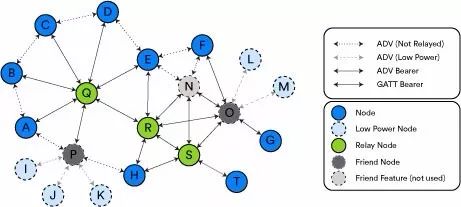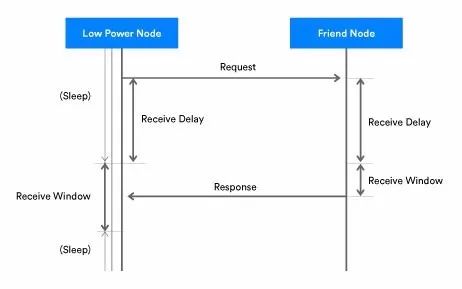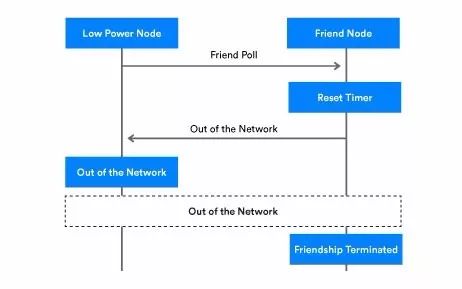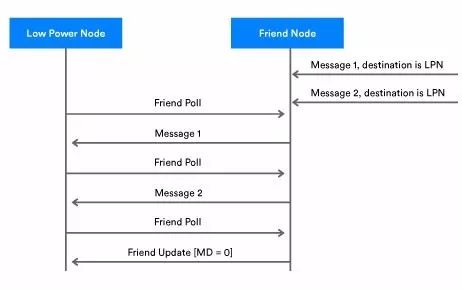
Bluetooth Low Energy (BLE) is one of the most power-efficient short-range wireless communication technologies in the world. Its low power consumption has made it a favorite among both developers and users. With the introduction of the Bluetooth mesh network, many developers are curious about whether this new feature also maintains the same energy-saving advantages. Does it inherit the low power characteristics of BLE?
The answer is yes! The Bluetooth mesh network includes various features designed to optimize power usage, especially the "Friendship" feature. This feature plays a crucial role in reducing power consumption for low-power nodes.
Overview of the Bluetooth Mesh Network Standard
The "Friendship" feature in a Bluetooth mesh network can be applied in many different ways. Some devices, like smart lights, are connected to a power source, so the power used by the mesh module is negligible compared to the overall power consumption of the device. However, other devices such as sensors or locks operate on limited power, meaning they rely on small batteries or energy harvesting techniques. These types of devices benefit the most from the "Friendship" concept in Bluetooth mesh networks.
If you've read an earlier article in our Bluetooth mesh series, you already know that a node is a device that is part of the mesh network. Nodes can have functions related to the product itself or the network operation. Some nodes may even take on special roles depending on the features they support.
All nodes can send and receive messages over the mesh network. Additionally, nodes can optionally support one or more additional network features, including:
· Relay function: The ability to receive and retransmit mesh messages across the network to expand coverage.
· Proxy function: The ability to forward messages between GATT and broadcast bearers.
· Low Power: The ability to operate with reduced receiver duty cycles, minimizing power consumption by only enabling the radio when necessary.
· Friend function: The ability to store messages addressed to low-power nodes and forward them when requested.
To understand how "Friendship" helps reduce power consumption, consider a sensor. A good example is a temperature sensor that sends data infrequently. It might only transmit readings when the temperature goes beyond certain thresholds, perhaps just twice a day. This sparse transmission keeps the device's power usage low.
But what if the temperature limits need to change based on the season? Sending configuration messages directly to the sensor would require it to be constantly listening, which uses unnecessary power. Instead, the sensor can communicate with a "Friend" node to retrieve updates, reducing its active time and saving energy.
Friend and Low-Power Nodes
An LPN must establish a relationship with a node that supports the "Friendship" feature to reduce its receiver duty cycle and save power. Figure 1, taken from the Bluetooth mesh specification, shows the relationship between LPNs and Friend nodes.

Figure 1 - Mesh Network Topology Example
In this diagram, Friend node P is associated with LPNs I, J, and K. Friend node O is linked to LPNs L and M. Messages addressed to these LPNs are stored and forwarded by their respective Friend nodes. This process happens only when the LPN polls the Friend node for messages.
Friend Node Parameters
LPNs must find a "Friend" node and establish a Friendship relationship. This process involves several key parameters set during the setup:
1. ReceiveDelay: The time between the LPN sending a request and starting to listen for a response.
2. ReceiveWindow: The duration the LPN listens for a response after the delay.
3. PollTimeout: The maximum time between two consecutive requests sent by the LPN to its Friend node.

Figure 2 - ReceiveDelay and ReceiveWindow Timing

Figure 3 - PollTimeout Timing
Establishing a Friend Relationship
To form a friendship, the LPN sends a "Friend Request" message. Only the Friend node in range can handle it. The message contains parameters like ReceiveDelay, ReceiveWindow, and PollTimeout.
The Friend node then responds with a "Friend Offer" message, including details like available queue size and RSSI values. The LPN selects the best Friend node using an algorithm determined by the application. Once selected, the LPN sends a "Friend Poll" message, and the Friend node replies with a "Friend Update" message to complete the setup.
Friend Node Information
Once established, the Friend node stores all messages intended for the LPN in a "Friend Queue." These messages are buffered and delivered when the LPN polls for updates. This ensures the LPN remains powered down most of the time, conserving energy.

Figure 4 - Friendship Messaging
Security
Bluetooth security is essential, and the same applies to Friendships. Two special security keys are used:
· Master Security Material: Used by all nodes in the network for general encryption.
· Friend Security Material: Shared only between the LPN and its Friend node.
Messages between the LPN and Friend node are encrypted using these materials to ensure privacy and secure communication.
Terminating a Friend Relationship
A Friendship can be terminated in several cases. If no poll is received before the PollTimeout expires, the connection ends. Alternatively, the LPN can send a "Friend Clear" message to terminate the relationship at any time.
Platform Selection Advice
When choosing a platform to implement Friend and LPN features, developers should consider:
· RAM capacity: Affects how many LPNs a Friend node can support and how many messages it can buffer.
· LPN performance: The MCU or module’s power efficiency and wake-up time are critical for LPN functionality.
As a developer, I believe we can share your expectations for the Bluetooth Mesh SDK. Together, we can explore the "Friendly Neighbors" feature in Bluetooth mesh networks!
usb type c cable,4-in-1 data cable,type-c charger,type-c charging cable
DongGuan BoFan Technology Co.,Ltd. , https://www.ufriendcc.com
